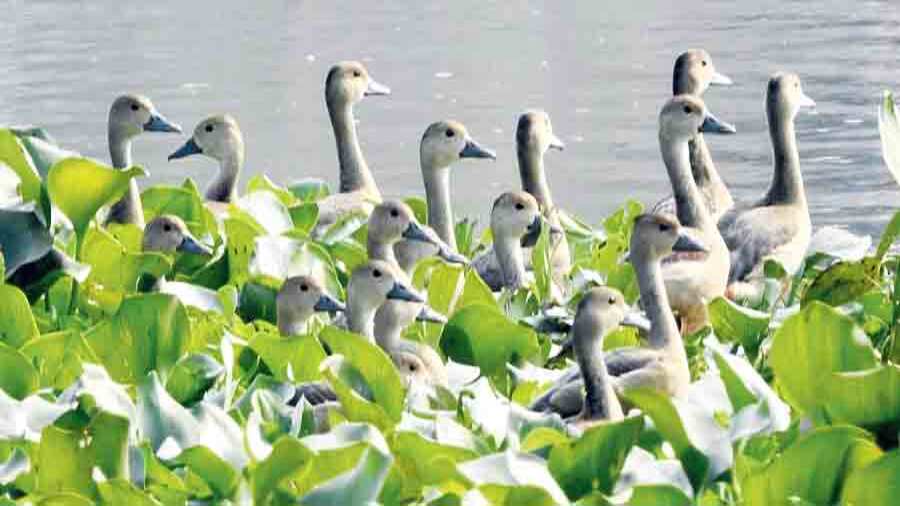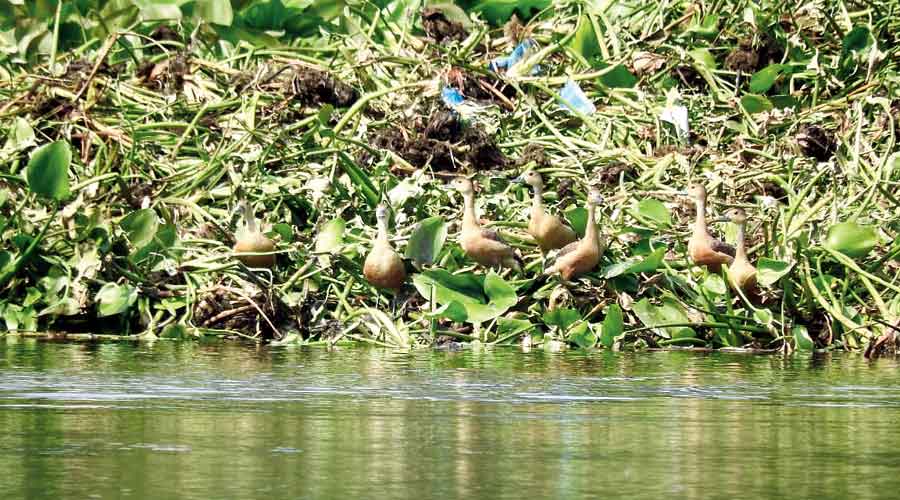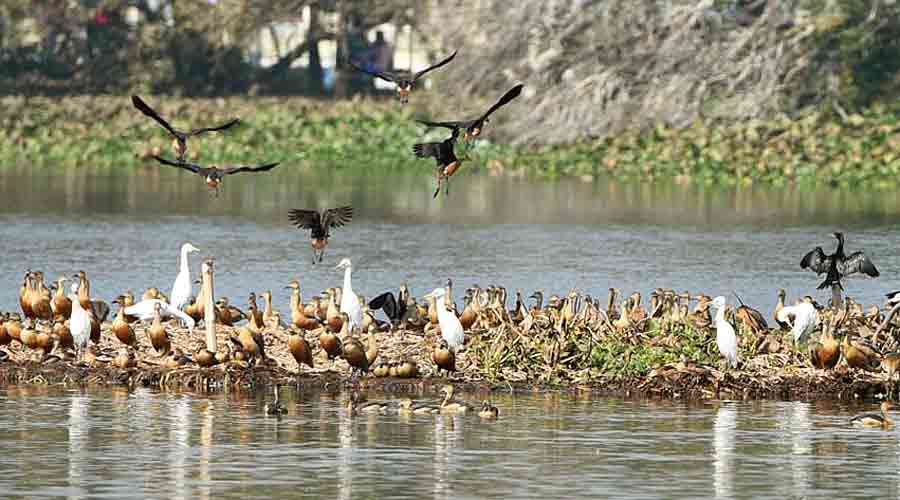Around 6,000 birds were recorded during a count conducted at Santragachhi Jheel on Tuesday. The water body, around 13km from the heart of Kolkata, is one of the last remaining nesting places of wintering waterfowl amid a growing sprawl of concrete.
The number of birds recorded at the water body this year is higher than the count over the past five years, said Arjan Basu Roy, the founder and secretary of Nature Mates, an NGO that works for wildlife conservation.
The winter bird count at Santragachhi Jheel, which is ringed by houses and is located near a busy railway station, is known to range between 6,000 and 10,000. In 2018, the count had fallen to 800 following an unscientific clean-up where labourers had removed water hyacinth islands from the water body where the birds roost and nest after foraging for food.
Roy said the bird count exercise required use of telescopes and cameras with powerful telephoto lenses. According to him, they had formed two teams and scattered around the periphery of the water body to count the birds.
Trans-Himalayan migrants like the Gadwall and Northern Pintail and local species such as the Purple Heron and the Bronze-Winged Jacana are among the lake’s winter better known attractions.
The Lesser Whistling Duck, also a local migrant, has the largest recorded population at the water body since the past several years.
On Tuesday, the team spotted 5,792 Lesser Whistling Ducks, 11 Gadwalls and one Northern Pintail.
While the Northern Pintails fly from Siberia, Mongolia and northern China to spend the winter months in temperate zones, the Gadwalls and Ferruginous Pochards breed in central Asia, China and Mongolia and fly thousands of miles to the subcontinent to escape the harsh winter there.
The volunteers also spotted and recorded a number of other species including Moorhens, Egrets, Herons and Jacanas among others. This year, a team of volunteers, led by Roy, created as many as 30 water hyacinth islands at different points of the water body.
Subhankar Patra of SundyWatch, a group of birding enthusiasts, said that there had been a steady stream of visitors to spot the birds.
“This water body is a dystrophy in itself as we still don’t understand how birds land up here. The water body is surrounded by buildings and close to a bustling railway station. However, the count here is very encouraging and we are hoping to see an increase in count on the final day of counting,” Patra said.
A final bird count at the water body is scheduled to take place on January 15.



